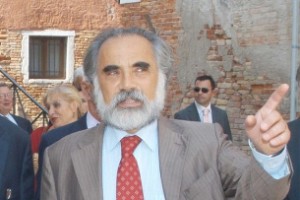VENICE AND THE GHETTO The Right Occasion to Recall Our Denied Rights
The history of Judaism is sprinkled with recurrent harassment and persecutions, whose dreadful peak was the Shoah. In part, Jewish people’s recollection of prejudice and discrimination has strengthened their Jewish identity; I believe that no other community has counted on recollection as ours has. Our memory is not celebration, meaning exaltation or glorification; it has to be considered as the act of coming together so as to recall the past, ending with a kaddish.
The establishment of the first official ghetto in history makes us reflect on different matters. Indeed, Venice Ghetto was not the fist place in which Jewish people had been relegated: in Morocco there were mellahs, which were called hira in Tunis, harrah in Algeria, harat al yahud in Cairo, juderías in Spain. None ever thought that isolation, segregation, could be considered a privilege, a source of pride to celebrate with concerts and touching opening speeches.
None ever thought that living in a subordinate position is an opportunity, a way of reaching joy and success. Just a few eccentric revisionist historians try to make people believe that Jewish people used to enjoy their lifestyle and the way they were treated during the 16th, 17th and 18 centuries. Undoubtedly, Venice Ghetto was not as bad as the Roman one; there was not the Pope’s influence, and the Most Serene Republic of Venice cared about its political independence as well as its religious moderation. However, the Inquisition existed and Jewish people were pariahs, living in a ghetto, foreign residents deprived of their citizenship rights and accepted only because of their usefulness. They were regularly blackmailed and lived under threat of being expelled, being sure of one single right, the “right” of having to pay taxes. People had to live inside a small area, which caused an undignified and outrageous promiscuousness that nowadays we would define as inhuman.
The humiliation that Jewish people experienced inside Venice Ghetto cannot be considered as the lesser of two evils; we cannot consider only the tip of the iceberg, represented by the cultural success of Elia Levita, Leon of Modena and Simone Luzzatto and the prosperity of a few families. Glorify these personalities means that we are forgetting the huge amount of people who suffered and lived their lives in degradation, unlike their non-Jewish contemporary.
We can organize seminars, conferences and debates on the foundation of the Ghetto, on ghetto life and on the cultural acquisition that were achieved inside it, but we cannot transform these events into joyful apotheosis of an unreal history. When the Ghetto was established, the memory of the three Jews of Porto Buffolè that had been burned at the stake at Piazza San Marco in 1480, accused of the usual alleged ritual homicide, was still alive. The ghetto did non existed yet, but it was already a Ghetto. A reminder of Mordechai ben Menachem Baldosa is engraved on a step of the Aron haKodesh of the Scola Canton, located in Ghetto Novo: he was “slaughtered as a kid” in 1672. He was not treated with justice, because Jewish people were not entitled to justice.
It would be appropriate if those who are willing to celebrate the establishment of the Ghetto in 1516 with concerts and exhibitions could bear in mind that epigraph and that accident, as a symbol of all the rights that the history and the Western culture have refused to grant to an entire community. Someone could say a kaddish for the three men of Porto Buffolè, for Mordechai Baldosa and for the ones that we do not remember or we do not know.
*Dario Calimani is a professor at Università Ca’ Foscari in Venice. This article has been translated by Ilaria Modena, student at the Scuola superiore interpreti e traduttori di Trieste, who is doing her apprenticeship in the newsroom of Pagine Ebraiche.

